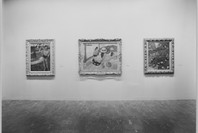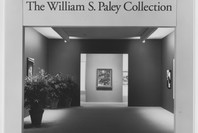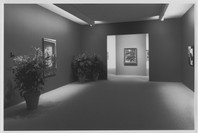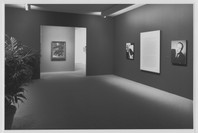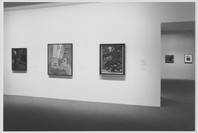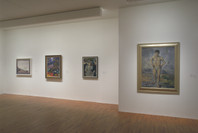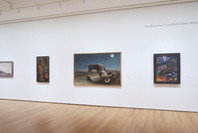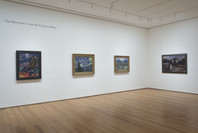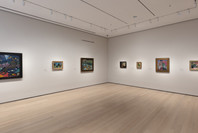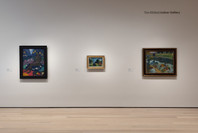Here a young Polynesian woman sits on a blue-and-white cloth. Gauguin’s style fuses various non-European sources: ancient Egyptian (in the hieratic pose), Japanese (in the relative absence of shadow and modeling and in the areas of flat color), and Javanese (in the position of the arms, influenced by a relief in Indonesia’s Borobudur temple). But there are also signs of the West, specifically through aspects of the pose derived from a work by the French Symbolist painter Pierre Puvis de Chavannes. The color, too, is eclectic: although Gauguin claimed to have found his palette in the Tahitian landscape, the exquisite chromatic chords in The Seed of the Areoi owe more to his aesthetic invention than to the island’s visual realities.
In the origin myth of the Areoi, a Polynesian secret society, a male sun god mates with the most beautiful of all women, Vairaumati, to found a new race. By painting his Tahitian lover Tehura as Vairaumati, Gauguin implied a continuity between the island’s mythology and its present reality during his stay there. In fact, the island had been profoundly altered by colonialism, and the Areoi society itself had disappeared. Gauguin’s anachronistic vision was particularly powerful for him, however, in the contrast it provided with the West, which, he believed, had fallen into “a state of decay.”
Publication excerpt from MoMA Highlights: 375 Works from The Museum of Modern Art, New York (New York: The Museum of Modern Art, 2019)
In spring 1891 Gauguin traveled to the South Pacific island of Tahiti, then a French colony. He hoped to find an enchanting paradise, far from the modern metropolis of Paris. However, by the time of Gauguin's arrival Tahiti had been profoundly altered by French colonization: poverty and sickness were rampant. Still, in his paintings of the island Gauguin included elements of the imaginary, configuring Tahiti as a pre-modern land of leisure. His use of bright, flat, and unrealistic colors and his interest in recovering a "pure" subject, closer to nature, were greatly influential to the next generation of European artists, including the Fauves and German Expressionists.
Gallery label from 2011.

